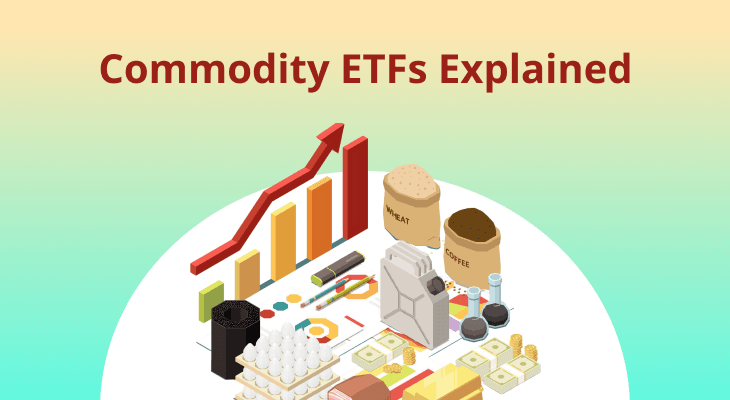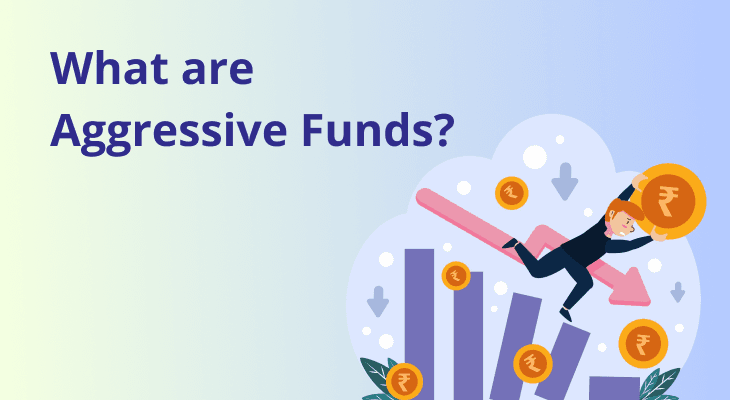
Gilt Mutual Funds
Mutual funds (MFs) offer investors, like you, access to a diverse range of investment opportunities managed by experienced fund managers. Several factors have made MFs highly popular, especially among the modern, tech-savvy Indian investors; the prominent ones being accessibility, diversification benefits, and professional management. With a vast variety encompassing equity funds, debt funds, hybrid funds, and more, mutual funds cater to investors with varying risk appetites and investment objectives. Gilt funds, a subset of mutual funds, specialise in investing in government securities and serve as a preferred choice for those seeking stable returns with minimal risk.
Before investing in Gilt Mutual Funds, it's crucial to grasp the essentials of this investment avenue. Understanding the intricacies and considerations associated with gilt fund returns is vital for making informed investment decisions.
What are Gilt Funds?
Gilt Mutual Funds, also known as government bond funds, are a category of mutual funds that primarily invest in government securities, including treasury bills, bonds, and other debt instruments issued by the government. Unlike other mutual funds that may invest across various asset classes such as equities, bonds, or commodities, gilt funds focus exclusively on government bonds. This singular focus provides you a high degree of stability and security, as government bonds are backed by the sovereign guarantee of the issuing government.
Benefits of Investing in Gilt Funds
Stable Returns
As mentioned earlier, the most attractive aspect of Gilt funds is that they offer the potential for stable returns over the long term. By investing in government securities with fixed interest rates, gilt funds provide a source of predictable income for investors seeking capital preservation.
Low Credit Risk
Gilt funds typically invest in government securities issued by sovereign entities with strong credit ratings. As a result, they are considered to have low credit risk compared to corporate bonds or other debt instruments. Government securities are backed by the sovereign guarantee of the issuing government, reducing the likelihood of default and providing a higher level of security.
Diversification Benefits
Gilt funds offer diversification benefits by providing exposure to an asset class with low correlation to equities and other riskier investments. By including gilt funds in a diversified investment portfolio, you can reduce overall portfolio volatility and potentially enhance risk-adjusted returns.
Liquidity
Government securities, the underlying assets of gilt funds, are highly liquid instruments traded in active secondary markets. As a result, gilt funds offer liquidity and flexibility in buying and selling fund units. You can easily redeem your investments in gilt funds, providing access to your funds when needed.
Inflation Hedge
While government securities may not offer high nominal returns, their stability and assurance can serve as an effective hedge against inflation, particularly during periods of rising inflationary pressures.
Professional Management
Gilt funds are managed by experienced fund managers who specialise in fixed income investments and have expertise in navigating the bond markets. You can benefit from their research, analysis, and active portfolio management strategies aimed at optimising returns while managing risks.
Accessibility
Gilt funds are easily accessible to investors through various channels, including mutual fund platforms like m.Stock, direct investment portals, and financial advisors. You can start investing in gilt funds with relatively low minimum investment amounts via the SIP mode.
Risks Associated With Gilt Funds
As is the case with any financial instrument, while there are benefits, there are also associated risks that need to be properly understood and considered before making a decision. Investing in Gilt Mutual Funds exposes you to two primary risks: interest rate risk and credit risk. Interest rate risk arises from fluctuations in prevailing interest rates, which can impact the value of government bonds held by the fund. When interest rates rise, bond prices fall, leading to potential capital losses. Since gilt funds primarily invest in government securities with fixed interest rates, they are particularly vulnerable to fluctuations in prevailing interest rates. Therefore, you need to be aware of the inverse relationship between bond prices and interest rates and understand the impact of interest rate movements on gilt fund returns.
Credit risk, although minimal in the case of government bonds, refers to the risk of default by the issuing government. While sovereign default is rare, it's essential for you to be aware of this risk and its potential implications.
Apart from these, there are some other risks that you should be aware of, such as:
Inflation Risk
Gilt funds may also be susceptible to inflation risk. While government securities offer relatively low-risk returns, they may not always keep pace with inflation, leading to a decline in real returns for investors.
Liquidity Risk
Gilt funds may face liquidity risk, particularly during periods of market stress or economic uncertainty. While government securities are generally considered highly liquid, there may be instances where liquidity in the bond market reduces, making it challenging for gilt funds to buy or sell securities at favourable prices.
Reinvestment Risk
Gilt funds are exposed to reinvestment risk, which arises when proceeds from maturing bonds are reinvested at lower interest rates. In a falling interest rate environment, the reinvestment of maturing bonds at lower yields may result in lower overall returns for the gilt fund.
Investment Scope and Essential Considerations
Gilt funds can be a prudent avenue for diversification and capital preservation. Before investing, you should consider your investment objectives, risk tolerance, and time horizon. Gilt funds are particularly suitable for conservative investors seeking stable returns with minimal volatility. When evaluating gilt funds, assess factors such as historical performance, fund manager expertise, expense ratios, and investment strategy. Additionally, you must consider the macroeconomic environment, prevailing interest rates, and inflation outlook, as these factors can influence gilt fund returns.
Cost Analysis
Gilt funds typically have lower expense ratios compared to actively managed equity funds, making them cost-effective investment options. The expense ratio represents the annual fees charged by the fund for managing and operating the portfolio. While gilt funds offer the potential for stable returns, it's essential to review the fund's expense ratio and any additional fees to ensure they align with your investment objectives. High expenses can reduce overall returns over time, impacting the net returns that you are likely to receive.
Tax Implications
Gilt fund returns are a form of debt mutual fund and taxed accordingly. Prior to 01 Apr 2023, they were subject to taxation based on the holding period and applicable tax laws with short-term capital gains (STCG) on investments held for less than three years and long-term capital gains (LTCG) for a holding period of three years or more. However, the recent changes to taxation laws have removed this provision. Now, profits made on gilt fund investments are added to your income and taxed as per your existing tax slab and prevailing tax rate.
Exit Strategies
Before investing in gilt funds, you should familiarise yourself with the exit options available. While gilt funds offer liquidity, it's essential to assess the fund's redemption process, including any exit loads or penalties for early withdrawals. Consider your liquidity needs and investment goals when planning your exit strategy from gilt fund investments. Additionally, monitor the fund's performance and macroeconomic indicators regularly to identify opportune times to exit or reallocate your investments.
Suitability for Different Investor Profiles
Gilt funds cater to a broad spectrum of investor profiles, ranging from conservative investors seeking stable returns to aggressive investors looking for capital appreciation. Conservative investors with a low-risk tolerance and a long-term investment horizon may find gilt funds particularly appealing. On the other hand, aggressive investors may use gilt funds as a component of a diversified portfolio to mitigate risk and enhance overall returns. Consider your risk tolerance, investment goals, and time horizon when determining the suitability of gilt funds for your portfolio.
Conclusion
In conclusion, investing in Gilt Mutual Funds offers an opportunity for stable returns and capital preservation, particularly in uncertain market environments. By understanding the risks, costs, tax implications, and suitability for different investor profiles, you can make informed decisions and build a well-balanced investment portfolio aligned with your financial goals. As with any investment, conduct thorough research, consult with a financial advisor, and regularly review your portfolio to ensure it remains in line with your objectives and risk tolerance.
SIPs let you invest small amounts regularly, making it easier to stay consistent with your goals. With time, your money grows faster through compounding, helping you get the most out of your investments. Try our SIP Calculator to see how your money can grow and make smarter plans for your future.
FAQ
What are Gilt Mutual Funds, and how do they differ from other mutual funds?
Gilt Mutual Funds primarily invest in government securities, offering stable returns with minimal risk, distinguishing them from other mutual funds investing in diverse asset classes.
What are the key risks associated with investing in Gilt Mutual Funds?
Gilt funds entail risks such as interest rate risk, credit risk, and inflation risk, impacting returns. Understanding and managing these risks are crucial for investors.
How do I determine the best Gilt Mutual Funds for my investment portfolio?
Assess factors like historical performance, expense ratios, fund manager expertise, and investment objectives to select the most suitable gilt funds aligned with your goals.
What are the tax implications of investing in Gilt Mutual Funds?
Gilt fund returns are subject to taxation based on the holding period and applicable tax laws, with long-term capital gains taxed at lower rates, enhancing tax efficiency.
Can I redeem my investments in Gilt Mutual Funds easily?
Yes, gilt funds offer liquidity, allowing investors to redeem their investments easily, providing access to funds when needed without significant constraints.
Are Gilt Mutual Funds suitable for conservative investors?
Yes, gilt funds are well-suited for conservative investors seeking stable returns with minimal volatility, offering a source of predictable income over the long term.
How do Gilt Mutual Funds perform during periods of rising interest rates?
Gilt funds may experience declines in value during periods of rising interest rates due to the inverse relationship between bond prices and interest rates.
Can I invest in Gilt Mutual Funds through SIPs (Systematic Investment Plans)?
Yes, you can invest in gilt funds through SIPs, allowing them to benefit from rupee cost averaging and disciplined investing over the long term.


